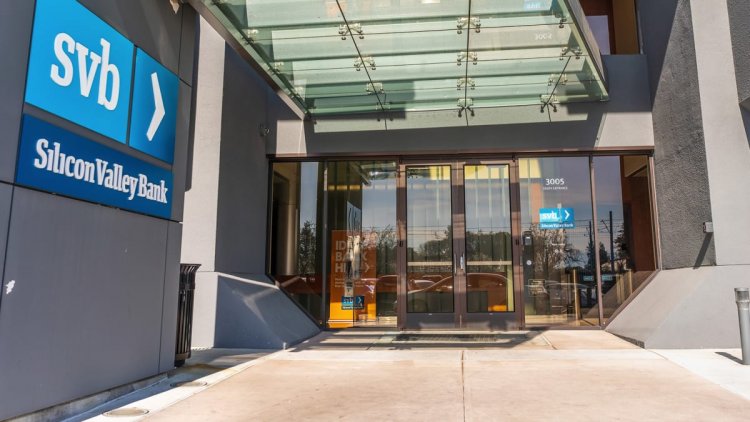SVB Collapse Rocks Crypto: Stablecoin USDC Loses Its Dollar Peg
The fifth largest cryptocurrency by market value lost its dollar peg after its issuer announced that it had around 8.25% of its $40 billion reserves locked in failed Silicon Valley Bank.

The fifth largest cryptocurrency by market value lost its dollar peg after its issuer announced that it had around 8.25% of its $40 billion reserves locked in failed Silicon Valley Bank.
The damage caused by the closure of Silicon Valley Bank, the second largest failure of a bank in U.S. history, continues to claim victims.
This time, it is in the cryptocurrency industry, and it's about USDC, or USD Coin, a coin issued by the firm Circle Financial.
USDC is a stablecoin. In other words it is a token which is pegged to other assets, like the dollar, in an effort to limit its volatility. Its value is not supposed to change: 1 USDC = $1.
This value is immutable. This is what appeals to institutional investors who want to invest in cryptocurrencies but fear exposure to the high volatility of the market.
USDC Fell to 87.88 Cents
Investors who put their money in stablecoins, are sure that they will get the same amount when they sell them or transfer them. Which is not the case with fiat currencies and other coins like bitcoin, as their price moves according to different micro, macro and other factors.
This is no longer the case since March 11, because USDC has just lost its dollar peg. The fifth cryptocurrency by market value fell as low as 87.8874 cents around 3:22 a.m. ET, about 13 cents below the $1 it should equal, according to data firm CoinGecko. At the time of writing, 1 USDC was worth 93.21 cents, still almost 7 cents below $1.
USDC's setbacks are due to the fact that its issuer announced overnight that part of its reserves were held in an account with Silicon Valley Bank.
"Following the confirmation at the end of today that the wires initiated on Thursday to remove balances were not yet processed, $3.3 billion of the ~$40 billion of USDC reserves remain at SVB," Circle announced on Twitter.
The firm added: "Like other customers and depositors who relied on SVB for banking services, Circle joins calls for continuity of this important bank in the U.S. economy and will follow guidance provided by state and Federal regulators."
Remember UST
The big risk for USDC is that, if its holders panic that there are not enough reserves behind it, they may start liquidating their coins, causing the cryptocurrency to crash. This doomsday scenario happened to the stablecoin UST, or TerraUSD, last May.
The regulators suddenly shut down the bank on March 10 and the FDIC took control. The federal agency has immediately created a new entity which will begin to operate on March 13.
By shutting it down, the Federal Deposit Insurance Corporation took control and is now the manager of $175 billion in customer deposits, including money from several startups and from some of the biggest names in the technology world.
The regulator also created a new entity, and indicated that unsecured depositors, that is to say SVB customers with more than $250,000 in their accounts, will not, for the moment, have access to their money. These customers are waiting for guidance on March 13.
Created in 1983, Silicon Valley Bank, which presented itself as a "partner for the innovation economy,” offered higher interest rates on deposits than its larger rivals, to attract customers. The company then invested the clients' money in long-dated Treasury bonds and mortgage bonds with strong returns.
This strategy had worked well in recent years. The bank’s deposits doubled to $102 billion at the end of 2020 from $49 billion in 2018. In 2021, deposits increased to $189.2 billion.
But everything turned upside down when the Federal Reserve began to raise interest rates, which made existing bonds held by SVB less valuable. As a result, the bank had to sell the bonds at a discount to cover withdrawals from its customers. In selling these bond positions, SVB had to take a significant loss of $1.8 billion.
Due to this loss, SVB suddenly announced that it needed to raise additional capital of $2.25 billion, by issuing new common and convertible preferred shares. This decision caused panic and a run on the bank.
About $42 billion of deposits were withdrawn by the end of March 9, according to a regulatory filing. By the close of business that day, SVB had a negative cash balance of $958 million, according to the filing.
What's Your Reaction?



























































